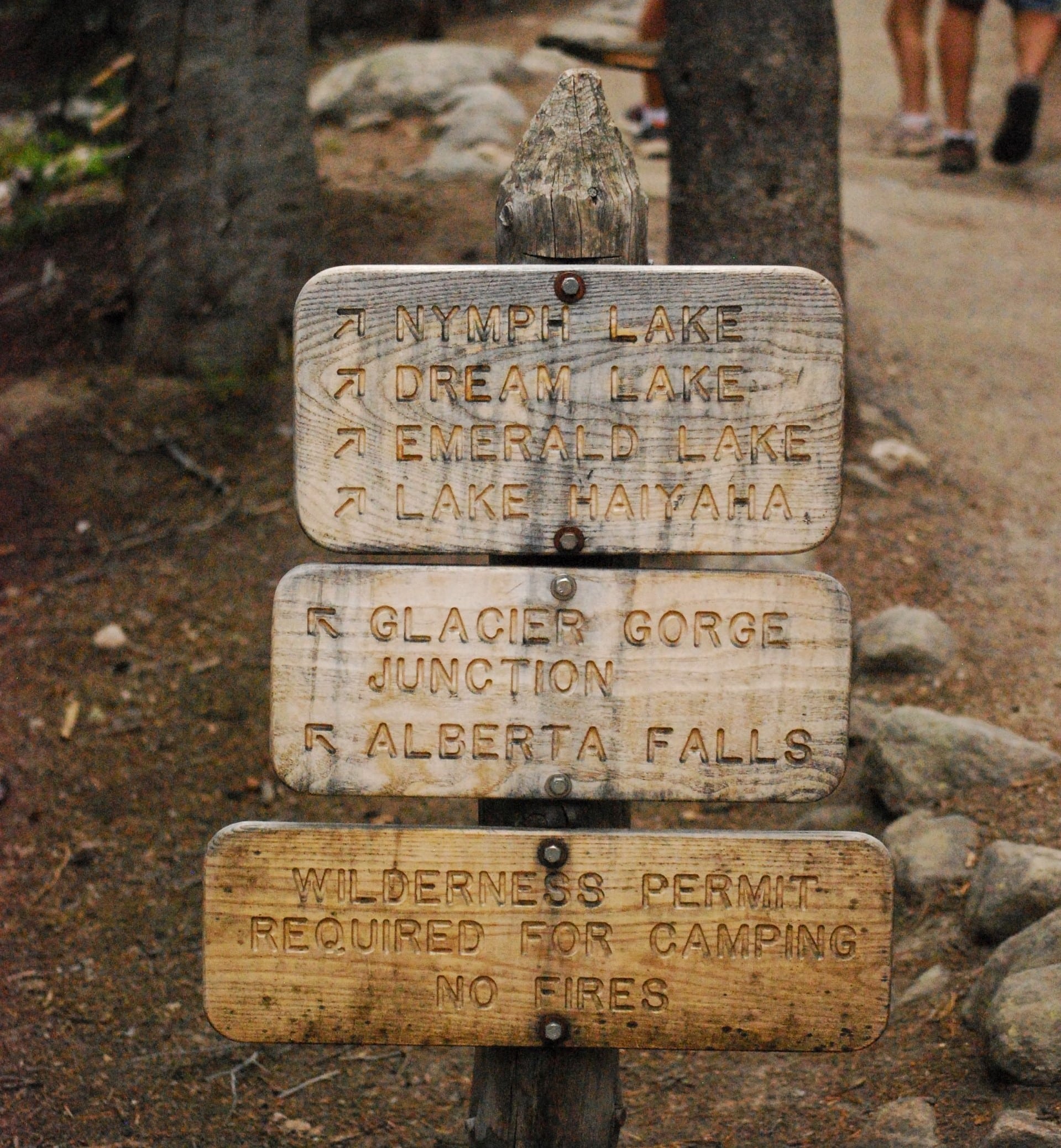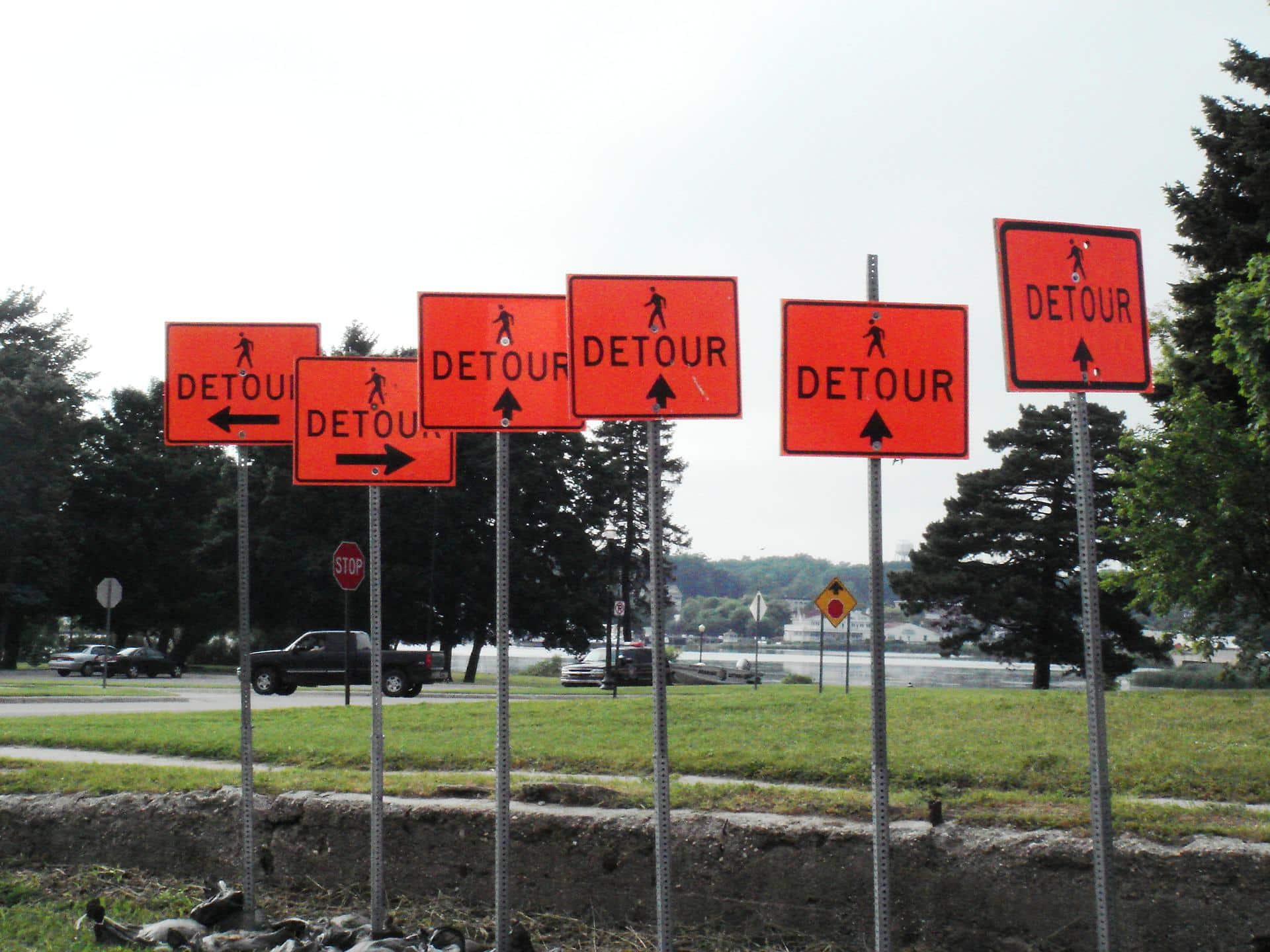Sign Blindness – Engaging Players in Public Spaces

Photo by Kevinsphotos onPixabay
Change Blindness, Inattentional Blindness, and Visual Clutter in Relation to Signs: What are they?
Jensen et al. (2011) define change blindness as “the failure to detect surprisingly large changes, often, but not always, to natural scenes” (532). People may perceive the sign as part of the background, or they may register its presence but not register that it has new information on it.
Solomon et al. (2021) define inattentional blindness as “the failure to detect an unexpected yet salient event or item when engaged in a different task (i.e., when attention is directed elsewhere)” (4). Visitors can be distracted by a million different things and may not notice a new sign because they’re focused on something else.
Visual Clutter is impacted by how many objects are in the space, how much each object draws the eye, and how the objects might interact. According to Edquist and Johnston (2008), there are three types of visual clutter: “situational clutter”, which relates to moving objects including people; “designed clutter”, which includes signs made by the authority in that area; and “built clutter”, which includes all the other information in a scene, including environment (733). Visual clutter can impact visitors in public spaces, since their attention may be drawn to situational and built clutter rather than signs.

Photo by David W. Riggs on Unsplash
This sign not only blends in with the environment around it (brown on brown), but the text also doesn’t stand out from the sign, as it is engraved instead of painted.
How to Combat Change Blindness, Inattentional Blindness, and Visual Clutter
Some studies have found that visitors are more likely to pay attention to objects when they are interested in those objects (Solomon et al., 2021), so make sure signs are in a central location and don’t blend in with the environment around them. Bright colors and bold fonts can help with this. You can also use alternative tools, like the Agents of Discovery app, to provide visitors with information in a fun and exciting way. This will help to minimize visual clutter and combat both change blindness and inattentional blindness in visitors since the difference will be more obvious.
According to Jensen et al., an important factor in preventing change blindness is an obvious difference in the environment before and after the change (2011, 534). This means that if you’re providing new information in a sign, make sure it looks obviously different from everything in the surrounding area. This will also reduce visual clutter by making it stand out from other objects in the area.
Another way to combat change blindness and inattentional blindness in your visitors is to talk to them! It may seem tedious, but asking visitors about what information they got from your space will help you understand what is engaging your visitors. If many visitors are blind to your signs, it might be time to try something more interactive, like a Mission in the Agents of Discovery app.
We hope these tips will help you combat sign blindness and engage your visitors in a whole new way. Visit the How to Promote Your Mission page for more ideas!

Photo by sdmacdonaldmiller on Pixabay
Too many signs that conflict with each other and confuse visitors.
References:
Edquist, J., & Johnston, I. (2008). Visual clutter in road environments – what it does and what to do about it. 2008 Australasian Road Safety Research, Policing and Education Conference, 733-738. http://casr.adelaide.edu.au/rsr/RSR2008/EdquistJ.pdf
Jensen, M. S., Yao, R., Street, W. N., & Simons, D. J. (2011). Change blindness and inattentional blindness. WIRES Cognitive Science, 2(5), 529-546. https://doi.org/10.1002/wcs.130
Solomon, T., Hasanzadeh, S., Esmaeili, B., & Dodd, M. D. (2021). Impact of Change Blindness on Worker Hazard Identification at Jobsites. Journal of Management in Engineering, 37(4), 1-14. https://doi.org/10.1061/(ASCE)ME.1943-5479.0000908.
